Ticodendron incognitum is the only species of Ticodendron, and the only member of the family Ticodendraceae. It is most closely related to the family Betulaceae.
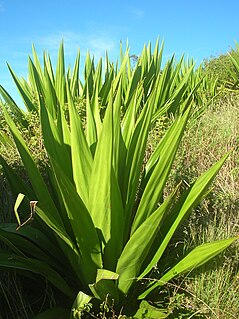
Furcraea foetida is a species of flowering plant native to the Caribbean and northern South America. It is widely cultivated and reportedly naturalized in many places
Tillandsia variabilis, the leatherleaf airplant, is a species of bromeliad in the genus Tillandsia. This species is native to Bolivia, Costa Rica, Mexico, Venezuela, Colombia, the West Indies and southern Florida.
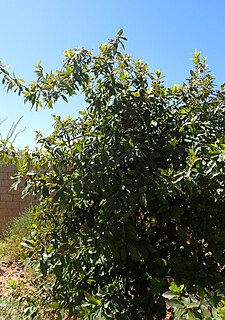
Quercus polymorpha, the Mexican white oak, Monterrey oak or netleaf white oak, is a North American species of oak. It is widespread in Mexico, Guatemala, and Honduras, and known from a single population in the United States but widely planted as an ornamental.

Quercus laurina is a Mexican species of trees in the Fagaceae. It is native primarily to Mexico and has also been found in Guatemala and El Salvador.
Quercus magnoliifolia, also known as encino amarillo, encino avellano, encino bermejo, encino blanco, encino napis, encino prieto, and roble, is a Mexican species of oak. It is widespread along the Pacific Coast of Mexico from Sinaloa to Chiapas, and also found inland as far as Zacatecas and Puebla.
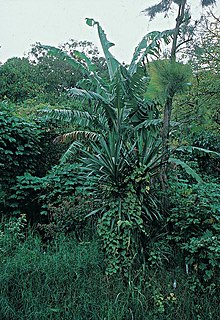
Yucca lacandonica is a plant species in the yucca genus with the common name "tropical yucca." It is native to Belize and to southern Mexico, the states of Chiapas, Veracruz, Tabasco, Quintana Roo, Campeche, and Yucatán. It is uniquely the only epiphytic species in the genus, although it has been reported to grow terrestrially as well.
Prionosciadium nelsonii is a plant species known from the Mexican states of Chiapas and Morelos. It is a biennial herb with a large taproot. Leaves are compound with narrowly lanecolate leaflets, some of them with narrow, tapering lobes. The inflorescence is a compound umbel at the top of the stem.
Passiflora viridescens is a plant species native to Perú and Ecuador.
Heliomeris longifolia is a North American species of flowering plants in the sunflower family called the longleaf false goldeneye. It is widespread across much of Mexico from Chihuahua and Sonora south to Chiapas, and found also in the southwestern United States from Nevada to western Texas.
Isocarpha atriplicifolia is a New World species of plants in the sunflower family. It is widely distributed in southern Mexico, Central America, the West Indies, and northern South America.
Xyris ambigua, the coastal plain yelloweyed grass, is a North American species of flowering plant in the yellow-eyed-grass family. It is native to southern and eastern Mexico, Central America, Cuba, and the southeastern and south-central United States.
Xyris baldwiniana, common name Baldwin's yelloweyed grass, is a North American species of flowering plant in the yellow-eyed-grass family. It is native to southern Mexico (Chiapas), Central America, and the southeastern and south-central United States.
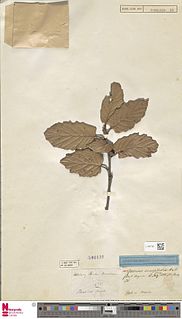
Quercus crassifolia is a Mexican species of oaks in the beech family. It is widespread from Sonora and Chihuahua to Veracruz and Chiapas. It has also been found in Guatemala.

Quercus peduncularis is an oak in the white oak group native to Mexico and Central America, ranging from Jalisco to Honduras.
Quercus candicans is a Mesoamerican species of oak tree in the beech family. It is native to central and southern Mexico and Guatemala. It grows from 1,200 to 2,700 m of altitude in wet montane forests, preferring calcareous soils.

Quercus castanea is a Mexican species of oak tree in the beech family. It is widespread across much of Mexico from Sonora to Chiapas.
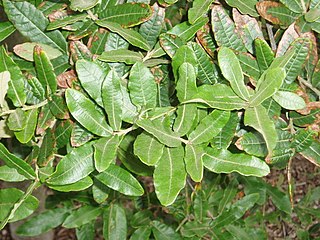
Quercus crassipes is a Mexican species of oak tree in the beech family. It is widespread across much of Mexico from Sonora and Hidalgo south to Chiapas.

Quercus elliptica is a Mesoamerican species of oak tree in the beech family. It is widespread across central and southern Mexico and Central America from Sinaloa and Hidalgo south as far as Nicaragua.
Quercus scytophylla is a Mexican species of trees in the beech family. It is native to western and central Mexico from Sonora and Chihuahua to Chiapas.








